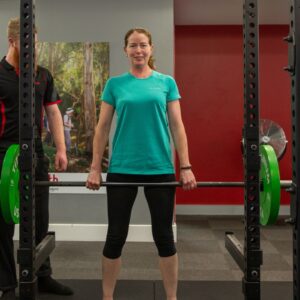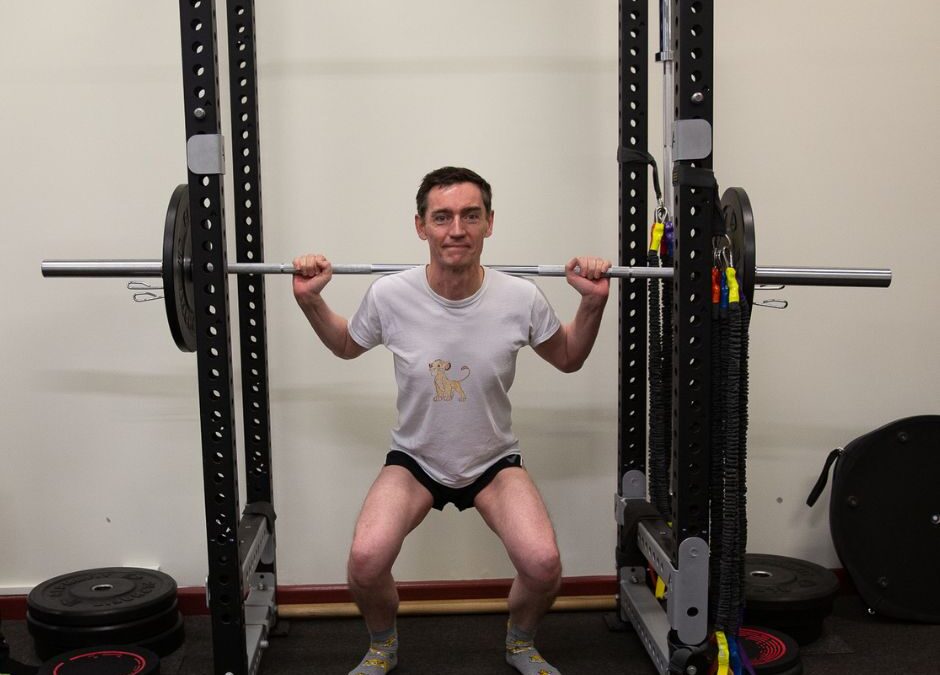How have I been affected by the “Me Now” movement with my exercise regime?
Since the pandemic, there has been a definite shift in the attitudes of clients that we have seen, in regard to their approach to health, wellness and their exercise regime. On a very positive note, the importance of health and wellness (not just with dealing with issues and injuries when they arise) has become a much more important part of people’s lives. People want to live a better life NOW and are taking the steps towards moving their lives in that direction, without excuse and apology.
However, we have also seen where this can be taken to extreme and/or when unrealistic expectations creepy in, sabotaging the effort people are trying to put in to get a positive result for the physical and mental fitness.
The positive part of exercise
The biggest and most important positive part has been that people are placing a biggest importance on their health and wellness. This has meant 2 things. Firstly, when people have had injuries, issues and niggles, they are addressing them earlier so that they do not become bigger issues and are managed early. Secondly, and this has been the big shift, especially in the over 45’s, that people are proactively doing something about their health and fitness to live the best life they can in the future.
The great thing as a health professional is that we have known for a long time, the importance of preventive exercise and strength training in living your best life and preventing injuries and issues in the future. However, now we are seeing the intent in the general population begin to match the potential that can be achieved.
The American College of Sports Medicine (2018) continue to confirm that:
Adults should undertake:
o 150 minutes of moderate exercise per week OR
o 75 minutes of intense exercise per week
This level of physical activity lowers your overall risk of all-cause premature death and diseases such as stroke, heart attack, type 2 diabetes and many types of cancers (especially, breast, colon and prostate cancer).
However, this does not mean going for an easy stroll is effective. It does mean you need to walk at a brisk rate, so that it is difficult to have a conversation with the person walking next to you. It doesn’t matter which activity you choose for your aerobic training, bike riding, walking, jogging or rowing, but the objective is the same, being somewhat puffed during the activity to gain the benefit.
This level of exercise is enough to train your aerobic energy system, the long activity part of your cardiovascular system. The aerobic energy system is responsible for converting and maintaining energy within your muscles and heart for longer activities such as going for a run or hiking through the Dandenong Ranges. Any activity that sustained use of energy over time
But what about strength training?
In the last 24 years of practice as a physiotherapist, the main reason people struggle with starting a new hobby or achieving a new physical goal is because they just aren’t strong enough. I often hear, “I’ve decided to take up running, so I started to just go for a run”. Although this sounds like a reasonable beginning, the most common limiting factor and cause of injury is a lack of strength.
A lack of strength means that the load on the joints and muscles is more than it should be, and the task is just harder than it needs to be.
The beginning is strengthening the major postural muscle groups, especially around the back, hips and pelvis. These are the muscles such as:
- The gluteal muscle groups around the hips
- The small muscles around the lower back (multifidus muscle groups)
- The quadriceps muscle groups around the knees.
These muscles keep you up straight and are also the muscles responsible for propulsion (moving you forward). Finally, these muscle groups protect the joints, by creating stability (control) around the joints and absorbing the shock of activity and reducing the direct load on the joints.
Why is running not enough to achieve this protection? Because, running is a low load, repetitive activity which means that you produce a slight increase in strength initially, but this plateaus very quickly. You need to strengthen these muscles to slightly more than they are comfortable doing to produce enough stimulus to grow and adapt.
What are the other health benefits of strength exercise training?
More specifically, strength training has the following straightforward benefits (Thomson, 2020):
Protection against heart attack and stroke – Several studies have shown that, independent of aerobic training, strength training of 1 hour once a week (or ½ hour, 2 times a week) reduces the risk of heart attack and stroke by 70%.
Management of diabetes and glucose tolerance – Improving your muscle mass not only increases the number of receptors that pick up glucose and pull it away from the blood stream due to more muscle fibres, but the number and efficiency of these receptors improve, enhancing your glucose tolerance and helping manage diabetes.
Better overall cancer management – It has long been shown that people who are stronger and do regular strength training survive better if diagnosed with cancer. Strength training improves the survival rate, the recovery from any surgery, management during chemotherapy or radiotherapy and overall recurrence. This is particularly so for breast, colon and prostate cancers.
Better memory and brain function – People with higher grip strength (a proxy for overall body strength) performed higher in memory tests and reaction time. In a study, those who lifted weights at least once a week showed significant improvements in cognitive function such as attention. It seems to be because strength training releases several chemicals into the brain, such as BDNF, which improve the health of nerves and brain cells.
The negative part of exercise
The negative part is when we see people diving headfirst into an unsustainable exercise program that doesn’t focus on the right muscle groups first, this either causes injury and/or a lack of progress.
2-3 times a week, with a focused and specific exercise program will give most people great results and steady, ongoing progress. The reason why we recommend 2-3 times a week is because when you exercise, you “load” the muscles, requiring them to adapt and change to the load. The load needs to be a balance between working you “a bit harder” than you are comfortable for the body to have a reason to adapt and less than amount that would cause injury. This is a fine balance that we aim to achieve during your sessions.
Less than 2 sessions a week is just enough to maintain strength gains achieved previously, but not enough to improve muscle strength or at least, it will occur very slowly. The ideal is 3 times a week, with a day in between sessions.
Over training is just as bad, so training every day is not a good idea. When you over train, you do not give the muscles a chance to adapt and grow. Muscle growth occurs when you rest, not when you exercise, so the balance of load and rest is very important for long term change.
The sensible approach to exercise
When you first start, you are not expected to know what you are doing, so ask a qualified and experienced exercise professional for help.
It is our job to ensure that you are working on the right muscle groups, in the right way to both lead you to progressing towards your goals and improving, at the same time, minimising your risk of injury.
Secondly, moderation and a sensible program:
- Strength training – of the main major muscle groups 2-3 times a week
- Good quality cardio training – 1-2 times a week
Having a well-designed cardio program that allows you to work on the correct levels that will make an actual change in your fitness (such as around your aerobic and anaerobic threshold) for a concentrated period of time will make a far better improvement in your fitness than just putting in the high volume without purpose.
Finally, take rest and recovery seriously. It is an “active” part of your program and should be planned, just like your training. Allowing a good 7-8 hours of sleep on your training days and the appropriate nutrition will ensure the get the best from your program and achieve the goals you desire.
Michael Dermansky – Senior Physiotherapist – MD Health
Article written for E-Bubble Life
References:
Chodzko-Zajko, W. J., Proctor, D. N., Fiatarone Singh, M. A., Minson, C. T.,
Nigg, C. R., Salem, G. J., & Skinner, J. S. (2009). Exercise and Physical Activity
for Older Adults. Medicine & Science In Sports & Exercise, 1510–1530.
Thomson, H. (2020). Discover your Inner Strength. New Scientist, 34-38.
Do you have any questions?
- Call us on (03) 9857 0644 or (07) 3505 1494 (Paddington)
- Email us at admin@mdhealth.com.au
- Check out our other blog posts here
Our clinical staff would be happy to have chat if you have any questions.
Take the first step to a healthier you!
Would you prefer for someone to contact you to book your FREE Full Body Assessment*?
Please fill in this form and someone from MD Health will be in touch with you soon.
Alternatively please call us on:
03 9857 0644 | 07 3505 1494 (Paddington – Brisbane (QLD) Clinic)
03 8683 9442 (Carlton North) | 03 9842 6696 (Templestowe)
Or email us:
admin@mdhealth.com.au (VIC) | paddington@mdhealth.com.au (QLD)
*Please note only the Full Body Assessment is a FREE service. The Full Body Assessment is for new clients at MD Health or returning clients who haven’t been in for 6 months or longer who intend to particpiate in our 13 Week Clinical Pilates Program**.
For all new clients who wish to come in for a one-off, casual or adhoc basis for Physiotherapy or Exercise Physiology the Initial Physiotherapy or Initial Exercise Physiology appointment is a paid service.
** The 13 Week Clinical Pilates Program at MD Health is not a lock in contract and you are not required to attend for the full 13 weeks if you do not wish.
BOOK A FULL BODY
ASSESSMENT TODAY
This site is protected by reCAPTCHA and the Google Privacy Policy and Terms of Service apply.




